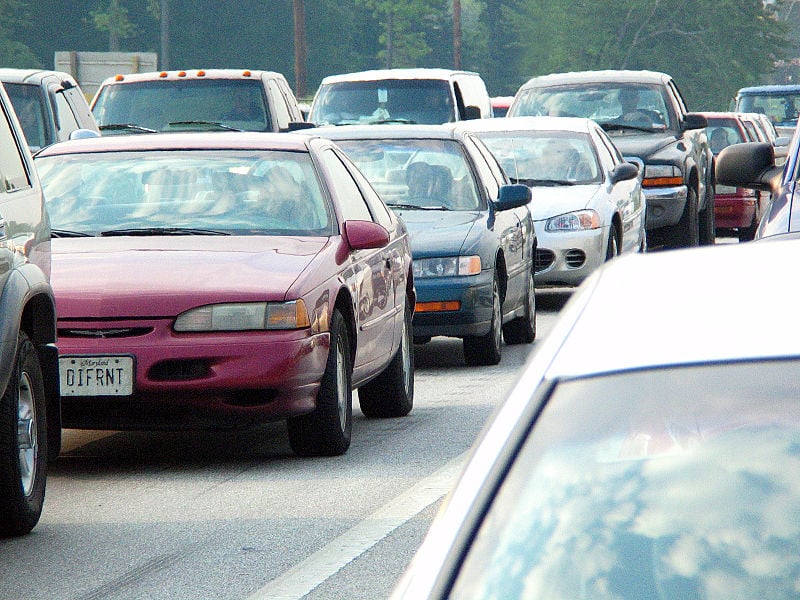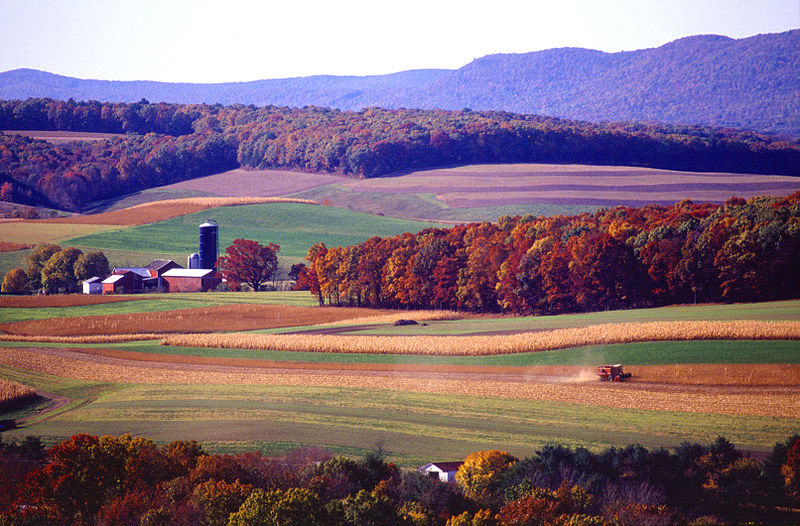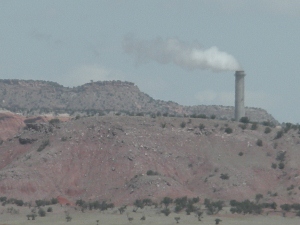I just recently read – somewhere – America’s air has worsened, in fact, there is 15 percent more pollution in it (I am assuming volumetric-wise), than there was, say, just a few years back. That’s not a good sign.
After years, even decades, of encouraging air trends, to some, this news may come as a shock. However, to the many, I would suspect, it is a disappointment more than anything else.
Historically, whereas emissions releases once were mainly manufacturing- and industrial-based (think: billowing smoke pouring from factory smokestacks as depicted in the below photo), as city planner Jeff Speck in his book: Walkable City: How Downtown Can Save America, One Step at a Time so keenly observed, today they are primarily vehicle-exhaust-pipe sourced.1 Completely flipped, has become this relationship.
Reasons for the air-quality decline doubtless number more than a few, among the more recent ones, the Trump administration’s supplanting of several key Obama-era air-cleaning programs. Two that immediately come to mind are the Clean Car Standards and Clean Power Plan initiatives. Withdrawing from the Paris Climate Accord, in this regard, certainly doesn’t help matters.
Usual suspects
It’s no secret that behind the worsening-air story, in large part, are trucks, cars and SUVs. It’s no wonder, what with 260-some million motor vehicles (90-percent-plus equipped with internal combustion engines) occupying roads, filling parking spaces, not to mention, all those still on dealer showroom floors and lots. With Americans numbering 330-million strong, with many, many motor vehicles out and about at any one time, well, coming from this sector is a lot of air pollution to go around. More than enough: too much, in fact, if you ask me.

Car, truck and SUV use is just scratching the surface. It’s also about the amount of fuel each year being bought and consumed – about 500 gallons per vehicle on average.
It also has to do with the numbers of manufactured product rolling off of auto-factory assembly lines – tens of millions annually, I would presume.
And, it’s about the sheer numbers of vehicle miles driven. On an annual basis, it’s over 3.2 trillion.
With somewhere in the neighborhood of 330 million people calling America home, if, say, two-thirds or 220,110,000 motorists are responsible for those aggregate driving miles, what we’re looking at then is a yearly driving average per motorist of 14,538.18 miles logged. Per capita, though, the number is slightly more conservative – 9,697 recorded miles, according to my calculations.
And, then there’s the cities themselves – an awful lot of polluted air emanating from these which, sort of goes without saying. Polluted air from industrial sites; and freight yards, ports, oil fields, chemical plants and chemical and gas storage facilities (where applicable); retail establishments, restaurants and residences even.

Furthermore, the energy sector is a big contributor, second in the United States to transportation, in fact.
And, those of the more unusual, too
There are just some places you wouldn’t expect air pollution to be anywhere in sight. Vehicle smog-check centers, shops, stations, test facilities aren’t one of these. Hospitals, on the other hand, qualify, that is, in other words, one doesn’t expect to find the deleterious airborne toxics there. But, sadly, that can be found there too.
Think emergency diesel-powered backup generators. These medical facilities could be excellent candidates for rooftop solar installations, I’d say. This in addition to the grounds-maintenance equipment used for keeping the hospital grounds and exteriors manicured. Employed to satisfy this role are an array of garden variety (and I mean that in the literal sense), grounds-sprucing implements including but not limited to edgers, leaf-blowers, trimmers and mowers. In my area and based on what I have seen, the bulk of these are gas-powered machines.
National parks, recreation and wilderness areas, as has been recently uncovered, polluted air has managed to find its way to these venues, too. No place seems spared, not even ranches and farms.

What’s going on?
The fact that adjustments to the Clean Car Standards and Clean Power Plan programs are being made and at a time when U.S. air-pollutant emissions are on the upswing, well, please forgive my asking, but, where’s the logic in that?! I could say I don’t get it. I think I do, really. It appears there’s a tug-of-war between the environment and the economy. That’s what this is about.
It doesn’t need to be one versus the other. The evidence is there that proves environmental and economic improvement do go hand-in-hand. And, there are lots of good green jobs to boot.
For perspective, rewind to the time when air pollution was front and center and, at the time, foremost on many people’s minds. We’re talking the 1940s in Los Angeles and in other municipalities scattered throughout the U.S.
Plans and programs were put in place. Air was cleaned. The economy, as far as I’m aware, didn’t suffer. People actually felt better, were better off for it, meaning health and quality of life had improved. End of story.
Notes
- Jeff Speck, Walkable City: How Downtown Can Save America, One Step at a Time, 2012, p. 44
Images: U.S. Census Bureau (third); David Feliz (fourth); Agricultural Research Service, U.S.D.A. (bottom)
This post was last revised on Jun. 11, 2020 @ 3:27 p.m. Pacific Daylight Time.
– Alan Kandel

